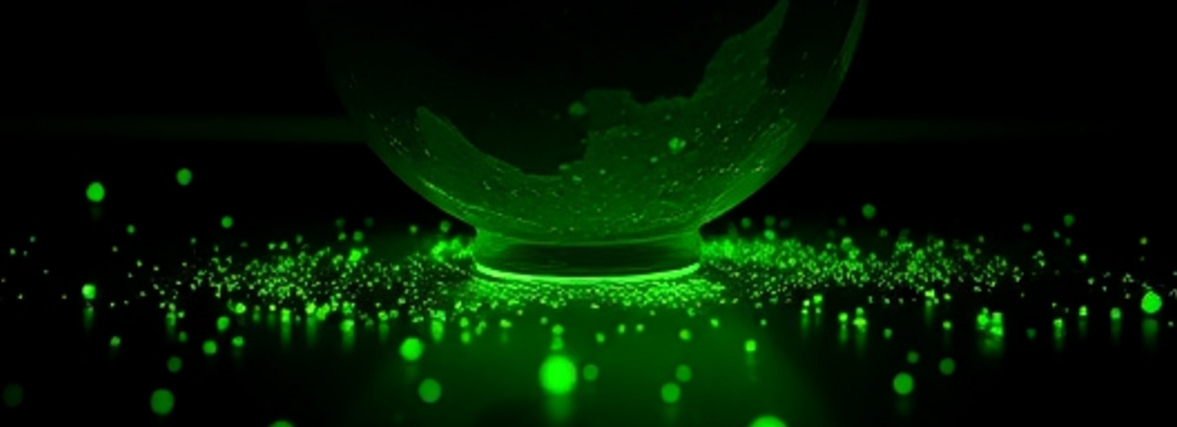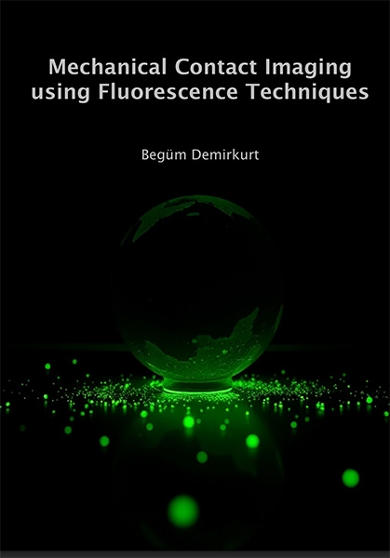
Dick Stufkens Prize 2025 awarded to physical chemist Begüm Demirkurt
The Dick Stufkens Prize 2025 for best PhD thesis of the Holland Research School of Molecular Chemistry (HRSMC) has been awarded to Begüm Demirkurt for her thesis “Mechanical Contact Imaging using Fluorescence Techniques”. Demirkurt, who obtained her doctorate from the University of Amsterdam last March, will receive the prize during the annual HRSMC symposium to be held on 21 November 2025 at the Amsterdam Science Park Conference Centre.

In her thesis, Demirkurt describes the development and use of fluorescence microscopy techniques to visualise, with nanometre resolution, the real contact area between rough surfaces. The method is based on the fluorescence of a rotor molecule and exploits its sensitivity to the viscosity or rigidity of the local microenvironment at the interface.
Selecting the winner, the jury for the Dick Stufkens prize 2025 unanimously decided for Demirkurt. The jury is impressed by the quality of her research and the width of her approach, combining molecular sensing and contact mechanics. The jury particularly appreciates the depth of her understanding, as appears from her bright discussions of the scientific results.
The thesis of Demirkurt reveals her skills in surface chemistry, optical spectroscopy and microscopy, atomic-force microscopy, surface profilometry, and computer modelling of surface structure using contact-mechanics software. In her hands, the combination of results from these diverse fields made for a highly successful research project. Adding to this, her thesis is well written, and the instructive schemes and clear figures testify to her great presentation skills. Begüm Demirkurt is a versatile scientist who fully deserves the Dick Stufkens Prize.
About the Dick Stufkens Prize
The Dick Stufkens Prize is awarded annually to the best thesis defended in the period July 1 to July 1 of the next year by a PhD student belonging to the Holland Research School of Molecular Chemistry (HRSMC). The prize – first awarded in 2008 - consists of a certificate and an amount of 2000 euros. The prize will be presented to Begüm Demirkurt at the annual HRSMC symposium to be held on 21 November 2025 at the Amsterdam Science Park Conference Centre, where she will deliver a talk on her award-winning research.

Thesis: Mechanical contact imaging with high resolution
At the heart of Demirkurt’s experimental research is a sensor consisting of a monolayer of fluorescent molecular-rotor molecules that are covalently linked to a silane functionalized glass cover slip. A glass or polymer sphere, glued to the head of a rheometer, is then pressed onto the glass cover slip by applying a controlled normal force. At the same time, the contact interface is imaged from below using a fluorescence microscope. While the fluorescence is weak in the absence of mechanical contact, it strongly increases when the probe molecules become confined. This thus enables imaging of the actual contact area in unprecedented detail.
In her thesis, Demirkurt explores the resolution that can be achieved using the described fluorescence imaging setup. She studies the photophysics of the rotor molecule in great detail to obtain a fundamental understanding of its fluorescence behaviour in diverse environments.
In the first part of her thesis, Demirkurt reports an ingenious method to turn the sensor into a single-molecule detector. Prolonged irradiation of the monolayer with intense continuous-wave laser light at 488 nm turns a large part of the fluorescent molecules into a dark state, only leaving a set of blinking molecules that can be observed one by one. This blinking phenomenon enables imaging the contact interface with a resolution of just under 60 nm, allowing the study of both soft (plastics) and hard (glass) contacts. This impressive resolution turns out to be instrumental for determining the real contact area of the glass sphere, as the contact is restricted to the discrete, nanoscopic irregularities of the rough surface. This highlight of Demirkurt’s research was published in ‘The Journal of Physical Chemistry Letters’, a prestigious journal in her field.
Following this unique result, Demirkurt presents a broad range of mechanistic studies, which aim at the understanding of the fluorescence characteristics of the rotor molecule at ensemble and single-molecule levels, across a variety of contact interfaces and solid-state environments. She concludes that most likely the photogenerated dark intermediate is a radical anion, which returns to the fluorescent neutral state by charge recombination. In a beautiful series of time-resolved experiments, Demirkurt shows the dependence of the blinking dynamics on the dielectric properties of the interface, the molecular confinement and the rotor density in the monolayer. This insight into the behaviour of the molecular rotor in diverse environments is essential to further refining the super-resolution technique. Subsequently, she applies this technique to study the effect of surface roughness on contacts and friction between two hard glass objects, taking the resolution down to 30 nm.
In the last chapter of her thesis, Demirkurt reports the sensitivity of the rotor-on-glass sensor in contact detection at the interfaces of soft polymers and hard glass. The study shows that the sensor primarily responds to changes in free volume, and much less to the pressure inside a contact. High- pressure experiments with the contact liquid DMSO point to the presence of a thin DMSO layer in the interface that most probably solidifies, thereby reducing the sensitivity of the sensor to pressure changes. This observation underscores that the rotor-on-glass sensor is best suited as on/off contact detector.
About the HRSMC
The Holland Research School of Molecular Chemistry was founded in 1994 and has been re-accredited three times by the Royal Netherlands Academy of Arts and Sciences (KNAW). The Research School combines research groups working on synthesis, spectroscopic characterisation and theoretical and computational description of molecular systems from the University of Amsterdam, VU Amsterdam, Leiden University and Radboud University Nijmegen. Apart from creating the appropriate conditions for further collaboration between the participating groups, the school also provides an internationally highly acclaimed teaching program for talented PhD and MSc students in molecular chemistry and physics. The late Prof. Dick Stufkens, scientific director during the period 1997-2001, was one of the driving forces behind the HRSMC. Among other things, his efforts have contributed greatly to the international reputation of the HRSMC.
